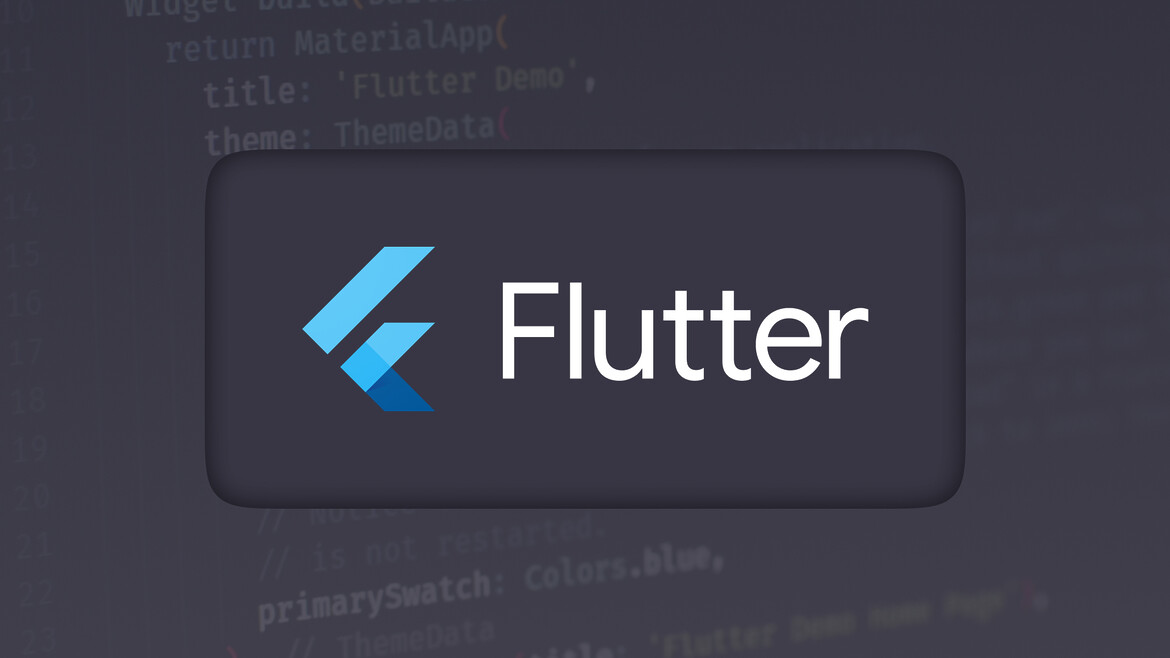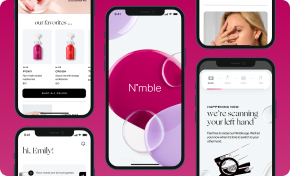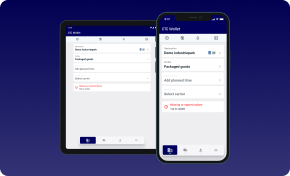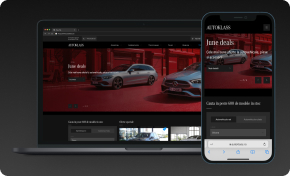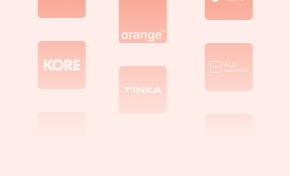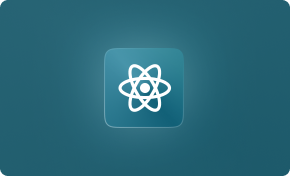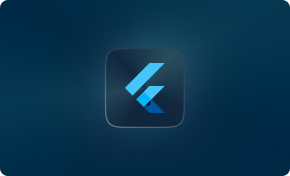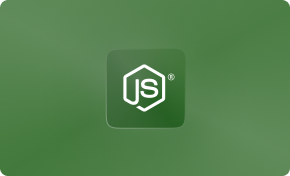The mobile application domain consists of business-oriented applications that meet enterprise requirements in external (banking apps and e-commerce) and internal (collaboration tools and field service applications) situations. The applications work with enterprise systems while managing big user databases alongside sensitive information. Enterprise applications designed properly enable the improvement of business processes while simultaneously boosting productivity and customer engagement. The mobile-first world demands that numerous businesses now consider enterprise apps essential for offering their staff and customers real-time data access through mobile platforms.
This comprehensive guide delves into the intricacies of building enterprise-grade mobile applications using Flutter, Google’s robust cross-platform development framework. From architectural considerations and security best practices to user experience design and compliance with industry standards, we explore every facet of the development process to help you create cutting-edge mobile solutions that meet the complex needs of modern enterprises.
Whether you are a seasoned developer looking to leverage Flutter’s capabilities for large-scale projects or a business leader seeking to understand the technical landscape of enterprise app development, this article provides valuable insights and practical strategies to ensure your mobile initiatives succeed in today’s competitive business environment.
IT Consultancy Designed Around Your Business Objectives
Expert Guidance to Optimize Your Technology Strategy
Discover IT ConsultingImportance and Benefits for Businesses
A robust enterprise mobile application connects business goals with technological innovation, enhancing productivity, customer engagement, and decision-making while ensuring easy scalability.
Imagine a dynamic corporation where employees are liberated from their desks. They can easily approve workflows while collaborating with others to access critical data through mobile devices without limitations. This combination delivers productivity gains that enable quick decision-making using real-time information. Customers enjoy brand interaction via user-friendly apps that offer customized deals and automated support through AI chatbots, all while effectively processing transactions. The improved customer engagement, along with enhanced brand loyalty, results in higher conversion rates. Enterprise applications with advanced analytical capabilities gather and assess data to provide managers with performance statistics related to employee work, market trends, and user behavior patterns. These capabilities empower managers to refine their growth strategies. A well-designed mobile solution enables businesses to rapidly expand their operations while establishing stable positions in new markets.
Why Cross-Platform Development?
The practice of creating native apps for multiple platforms demanded different teams together with separate coding bases which resulted in high costs and prolonged development timelines. With cross-platform development businesses have just one source code to distribute applications across various platforms while minimizing costs for development and maintenance. Through this method, companies prevent work duplication, which reduces overall expenses while accelerating their market delivery.
Companies that use single cross-platform teams achieve better consistency and prevent synchronization delays which separate teams might create. The present-day cross-platform application ecosystem enables comparable user experience alongside native application speed so companies can adopt a web-desk-tailored mindset. Enterprises find cross-platform development more attractive due to its reduced expenses and accelerated development process.
Introduction to Flutter
The open-source UI toolkit of Google named Flutter enables developers to create applications that compile natively from a single codebase thus becoming a preferred choice for enterprise app development. The architecture of Flutter differs from previous cross-platform frameworks because it uses widgets and native code compilation for high-performance applications with native user interfaces. Developers use Dart for programming while accessing pre-made UI widgets, which simultaneously operate across Android, iOS, web, desktop, and embedded systems through the Skia graphics engine. The framework maintains consistent design throughout different platforms through its dedicated Material Design Android widgets and Cupertino iOS widgets. The hot-reload feature in Flutter enables developers to work more efficiently through its rapid user interface development capabilities.
Flutter’s Key Advantages for Enterprises

Faster Development & Time-to-Market
The shared Flutter codebase enables developers to create features for all platforms simultaneously which speeds up their delivery. The Flutter platform enabled Alibaba and Google to shorten their development periods. The redeveloped Google Pay app with Flutter required 60–70% less developer time which facilitated simple management and fast market expansion.
Cost Efficiency
A codebase maintained as one unit decreases engineering expenses. Maintaining a single platform does away with the requirement of establishing multiple separate teams that work exclusively on specific platforms. Developing native apps for multiple platforms would have cost 40% more budget but Flutter allows developers to save this money. The application of universal bug fixes and updates decreases long-term maintenance expenses because they affect all platforms equally.
Consistent UX Across Platforms
Flutter’s rendering capabilities guarantee that the application provides a uniform appearance and functionality across all devices. The framework eliminates problems that occur when Android implementation methods differ from iOS. By implementing features like the Cupertino switch on iOS, you can preserve platform conventions while developing and achieve native-like results. The application provides identical, strong user experiences across all platforms.
High Performance
The native ARM compilation of Flutter apps combined with GPU rendering ensures these apps avoid the performance problems that WebView-based hybrids experience. The foundation of Flutter eliminates the requirement for a JavaScript bridge like other frameworks do thus enabling rapid application startup and fluid animations above 60fps. The Skia engine and efficient widget framework of Flutter combined with its Skia engine enable default performance that makes Flutter apps perform as well as native applications.
Hot Reload & Developer Experience
Flutter’s development cycle is known for being extremely developer-friendly. Hot reload allows for instant code changes to be reflected without restarting the app, which speeds up development and experimentation. Many have praised Flutter’s documentation and tooling, and the Dart language is easy to learn with Java/C# or JavaScript experience.
Robust Community and Ecosystem
Since the launch of Flutter, it has developed a large community of developers. Thousands of packages and plugins are available to extend its functionality (including connectivity, payments, graphs, and more), many of which are maintained by the community or Google. Although Flutter is relatively new, this growing ecosystem compensates for it – there is likely to be a package for nearly any need. The framework is continuously updated and improved due to Google’s support. Regarding issues, the Flutter team is highly responsive, and new features are regularly added, ensuring it remains state-of-the-art.
Multi-Platform Future-Proofing
However, Flutter is not just for mobile; it also supports web and desktop (Windows, macOS, Linux) from the same codebase. The advantage of this is enormous for enterprises that need to deliver a unified experience across devices. For instance, we could develop an internal tool that can function as both a mobile app and a web app using common logic. Even emerging platforms, such as embedded devices and automotive systems, utilize Flutter (Toyota uses Flutter for their in-vehicle infotainment systems). Today, Flutter is a technology designed for a multi-platform world, and choosing it now is an investment in the future.
Overall, Flutter enables enterprises to efficiently build high-quality cross-platform mobile apps. Its capabilities align well with enterprise needs, thanks to fast development, native performance, robust security (Flutter apps can utilize the platform’s native security features), and the ability to scale to other platforms in the future. In the next couple of sections, we’ll explore how to build an enterprise mobile app with Flutter, covering the entire development lifecycle, architecture, security, UX design, integration, testing, deployment, and more.
Development Lifecycle
Developing enterprise mobile applications demands more than coding. It requires meticulous planning, suitable methodologies, and excellent teamwork practices. A structured development lifecycle protects the project from missing business requirements while upholding quality standards. The typical enterprise app development lifecycle features essential stages that can be successfully executed through Flutter cross-platform development.
Planning and Requirement Analysis
All successful apps begin with a solid foundation of planning and requirements gathering. At this stage, business stakeholders and the development team must collaborate to define the app’s goals, identify user targets, and outline essential functions. Key steps include:
Clearing the Way for Efficient Product Discovery
Fast-Track Your Innovation to Market in Four Weeks with Our TechBoost Program
See Product Discovery ServicesDefine Business Goals
The enterprise needs to specify its goals regarding the app development project. Does the system exist to boost the productivity of employees? Drive e-commerce sales? Improve customer service? The project and post-launch evaluation process will use measurable goals (KPIs) to provide direction.
Gather Requirements
The team needs to gather extensive requirements from every stakeholder involved. The requirement-gathering process for internal applications involves conducting user interviews within departments or creating process diagrams. Market research, along with existing app feedback analysis, serves as the requirements-gathering method for customer applications. The requirements should specify system functions and integration points, such as “our CRM connection,” while also including system limitations, including compliance and offline requirements.
Prioritize Features
Enterprises typically develop extensive lists of required features. Organizations need to establish clear priorities for these features using techniques like MoSCoW or by developing minimum viable product (MVP) scopes. Development should begin with essential features that provide immediate value while postponing less important features for subsequent stages.
Technical Feasibility & Stack Decisions
Assess the capability to fulfill system requirements technically. The verification process confirms that Flutter supports the required features (spoiler: Flutter is highly adaptable). However, special low-level device capabilities require verification of available plugins (check that Flutter provides the needed plugins). Similarly, the app development process requires verification of available APIs or services that will enable the app to consume them.
Architecture & Security Planning
The preliminary phase needs architecture planning (Section 3) and security requirement notes (Section 4). The app requires encryption and compliance planning when it handles sensitive data, so these measures should be included from the very beginning.
Timeline and Resource Planning
Based on the established scope, the project timeline with defined milestones should be developed. The development team members need to be identified so that sufficient time is assigned to testing, iteration, and handling unexpected delays.
A solid foundation emerges from thorough planning. The absence of this phase often leads to business requirements that stray from initial expectations. Research shows that insufficient planning, combined with disorganized team dynamics, contributes to the failure of most projects, as poor teamwork and process management result in project failure in nearly 60% of cases. This phase requires significant investment because it helps mitigate potential project risks.
Choosing the Right Development Approach
The project requires developers to select a development approach as a crucial early decision. The first choice involves selecting a methodology along with its associated process. Enterprise applications gain from development approaches, as they influence both flexibility and delivery time. The development approaches available for projects include Waterfall, Agile, and their combination.
Waterfall (Sequential) Approach
The traditional process divides development work into distinct stages that proceed sequentially from requirements to design, then to implementation and testing before deployment. The project transitions from one phase to the next only when the current one is completed. While Waterfall produces suitable results for established projects, it proves too inflexible for mobile application development. The requirements for mobile apps can evolve over time, meaning that waiting until the later stages of development for testing or feedback poses significant risks. Making changes late in the process can become very costly. Enterprises with extensive documentation needs may utilize Waterfall development; however, this methodology fails to accommodate the typically fast-paced nature of mobile software development.
Agile Approach
The adoption of Agile methodologies, such as Scrum or Kanban, remains the standard practice for mobile application development. Agile development methods focus on creating software through multiple cycles, allowing organizations to remain adaptable while gaining user insights. The team follows an approach in which it delivers work in small increments (sprints) and actively adapts to changes as they occur. In enterprise application development, Agile proves useful by permitting real-time stakeholder input and adapting to changing requirements, as users commonly propose new features during the development process. The risk management capabilities of Agile become evident through the early delivery of essential value. Agile development is explored in detail in the next section of this text.
Hybrid or Iterative Approaches
Enterprise teams blend various development approaches by initially completing planning and architectural work similar to waterfall systems while releasing new application versions based on agile principles. Agile implementation takes place within specific phases, while the program preserves a waterfall structure through defined timeframes and project boundaries. This method enables organizations to tailor it to their unique requirements and constraints.
Organizations should select their approach based on their culture and the expectations of their stakeholders. Management needs to understand the benefits of Agile, such as rapid delivery and adaptability, before they accept detailed Gantt charts. The organization should adopt pure Agile methods and continuous delivery if speed and innovation drive their development. The fast development cycle of Flutter, along with its ability to function across platforms, makes it suitable for Agile because it allows for quick demos and feedback. Adopting Agile methods leads to better inter-team cooperation, faster product release cycles, and satisfied end-user requirements.
Agile Methodologies in Mobile App Development
Agile has become the standard methodology for modern mobile app projects. In an enterprise context, Agile, which includes frameworks like Scrum and Kanban, helps manage complexity while delivering value quickly. Key principles of Agile include iterative development, customer feedback, and adaptability to change. Here’s how Agile typically works for a mobile app:
- Project Breakdown: The project is divided into sprints (in Scrum), typically lasting 1-2 weeks. In each sprint, the team commits to delivering a set of features or improvements.
- Daily Stand-Up Meetings: These meetings are held to synchronize the team, discuss progress, and remove any blockers.
- Sprint Review: At the end of each sprint, there is a potentially shippable product increment—such as a new app version with additional features. This increment can be demonstrated to stakeholders or provided to a small user group for feedback, which aligns with User Acceptance Testing later on.
- Review and Retrospective: After each sprint, the Agile team conducts a review, demonstrating what was built and gathering feedback. This is followed by a retrospective that focuses on continuously improving the team’s processes.
For enterprise applications, Agile offers flexibility. If new requirements arise—such as a regulatory change or an idea from user testing—they can be added to the backlog and addressed in an upcoming sprint, thereby preventing project disruptions. Agile emphasizes collaboration, not only within the development team but also with business stakeholders and end-users. This ensures that the product remains aligned with business needs throughout development, not just at the beginning.
Common Agile Frameworks
Scrum
This framework includes defined roles (Scrum Master, Product Owner, Development Team) and ceremonies (sprint planning, daily scrum, sprint review, sprint retrospective). The Product Owner manages the backlog of features (user stories), prioritizing them based on business value. Scrum is popular for app development due to its structured yet flexible approach.
Kanban
This method is more flow-based and does not use fixed time-boxed sprints. Work items move through stages on a Kanban board (e.g., To Do -> In Progress -> Testing -> Done). Kanban is suitable for teams that need to handle incoming tasks continuously or that experience frequent shifts in priorities. Its focus is on limiting work in progress and ensuring continuous delivery.
Lean
Lean principles aim to eliminate waste and optimize processes. In software development, this means removing unnecessary steps, delivering only what is needed, and continually improving quality and efficiency. Many Agile practices originate from Lean thinking.
Regardless of the specific methodology, the core benefits of Agile remain consistent. The Agile approach provides numerous advantages to mobile app development teams, including:
- Improved Collaboration and Communication: Agile fosters constant communication within the team and with stakeholders, ensuring everyone understands goals and issues.
- Enhanced Flexibility and Adaptability: Changes in requirements can be managed smoothly. If a high-priority change arises, the Agile process can accommodate it in the next iteration without significant disruption.
- Accelerated Time to Market: By focusing on incremental delivery and prioritizing a minimum viable product (MVP), useful features can be released to users more quickly. Agile teams often launch a basic functional app rapidly and then enhance it with updates. This incremental release strategy allows businesses to begin experiencing value sooner.
- Reduced Risk of Project Failure: Continuous testing and feedback in Agile help identify problems early. There is less risk of spending months building the “wrong thing,” as course corrections happen regularly. This frequent validation reduces the chances of a catastrophic failure at the end.
- Improved Customer Satisfaction: Frequent releases and the ability to adapt to user feedback result in a product that more closely meets user needs. Users and stakeholders feel heard when their feedback leads to quick changes in the app.
In practice, an enterprise mobile team may adopt an Agile mindset even if constrained by fixed deadlines. For example, they might use two-week sprints to ensure steady progress and hold bi-weekly demos for stakeholders. Many enterprises also implement DevOps alongside Agile—automating integration and deployment (CI/CD) to facilitate frequent releases.
Real-World Tip
At the start of a project, consider conducting an Agile Discovery or Inception phase. This short period allows the team and stakeholders to collaboratively finalize the backlog, create high-level designs, and possibly develop prototypes. This initial work sets up the backlog for Scrum or Kanban. Once development begins, it’s crucial to maintain a well-groomed Product Backlog and utilize tools like Jira or Azure Boards to track tasks and progress. Ensuring visibility into the work, whether through a Scrum board or Kanban board, fosters transparency, which is vital in enterprise environments.
In summary, adopting Agile methodologies for enterprise app development leads to a more responsive process that can handle the dynamic nature of modern development.
Team Roles and Collaboration
Enterprise mobile app development requires teamwork among various contributors. The quality of your team directly influences the quality of your application, according to standard practice. A team needs clear roles and strong collaborative practices to establish itself. An enterprise mobile app built with Flutter necessitates a diverse team of personnel, even though it may require less manpower than developing native apps separately. The standard roles in a mobile app development team, along with their responsibilities, include the following:
Product Manager / Product Owner
This role represents business operations and direct user groups. The team determines how the app will look while setting feature rankings to guarantee product value. The Product Owner of Agile Scrum maintains control over the backlog. The team works as a bridge between stakeholders, including executives, end users, and development personnel, to ensure they construct the appropriate solution.
Project Manager / Scrum Master
Through this role, the project maintains its timeline alongside its operational process. The Scrum Master facilitates Agile ceremonies to assist the team in overcoming obstacles that may arise. They focus on process health and delivery timeline management. The roles of Product Manager and Project Manager may merge into a single person or share responsibilities, especially when working with smaller teams.
Business Analyst (BA) and/or System Analyst
The complex nature of enterprise systems requires BAs to extract requirements through detailed documentation and to develop user stories and business rule definitions. The development team receives guidance from these professionals regarding necessary work items and their purposes. The mobile application’s technical needs, alongside system integration, form the focus for system analysts.
UI/UX Designers
Responsible for user interface design and user experience flow, the app’s visual appearance, layout, and interactive prototype design fall under the expertise of these professionals. Designers of enterprise applications must balance attractive visuals with functional usability while adhering to established corporate branding guidelines. They create wireframes and high-fidelity mockups specifically for key screen interfaces. The development team applies user experience principles to develop an application that provides easy access to its features.
Flutter Developers (Frontend)
Software engineers dedicated to Flutter/Dart development construct the mobile application interface. Their conversion of UI designs results in the implementation of Flutter widgets and app functionality. Flutter’s compatibility with Android and iOS enables your project to work with a single mobile development team instead of maintaining separate teams for Android and iOS in native development. A Flutter developer must have a strong understanding of the Dart language, multiple state management patterns (Provider and BloC, among others), and device plugin integration capabilities.
Tailored Mobile Solutions for Your Unique Needs
Redefine Your Business with Mobile Application Development
Explore Mobile App DevelopmentBackend Developers
Enterprise applications need server-side components, including APIs and databases, for most of their functionality. The server-side components that the application needs to function are developed and sustained by backend developers. The developer builds REST or GraphQL APIs and implements microservices along with secure database storage. When enterprise teams do not employ backend developers directly, the Flutter team members interact with maintained APIs from other teams. New product development typically requires backend engineers to work simultaneously.
Full-Stack or API Integrators
Some Flutter developers undertake additional tasks, including cloud service integration (Firebase and others) and simple serverless function development. When task requirements demand it, the full-stack developer will work with both the Dart and backend code. The makeup of the application depends on its technical complexity.
QA Engineers (Testers)
Enterprise apps require quality assurance as a fundamental element for their success. QA engineers create test cases to manually inspect app features, confirming that each story meets its acceptance standards. Testers evaluate all aspects of functionality, usability, performance, and security requirements. Agile requires QA to participate throughout every sprint instead of delaying testing until the final phase. QAs with coding abilities can contribute to automated testing through Flutter, as the framework offers extensive testing options for unit, widget, and integration testing.
DevOps Engineers
When dealing with complex deployment pipelines and continuous integration, DevOps professionals or release engineers are responsible for setting up and maintaining CI/CD pipelines, build signing, application store deployment, and infrastructure monitoring. In small teams, the cloud team or senior developer could take on these responsibilities instead of establishing a dedicated person.
Team Lead / Architect
Large projects typically benefit from a tech lead or software architect who defines high-level design decisions, creates coding standards, and provides mentoring for the team. The application architect must ensure the front-end and the communication between front-end and back-end function in a manner that supports scalability and maintainability. The team member reviews developer code while offering guidance on best practices in development. A standard small-to-medium enterprise app development team consists of a product manager, a project manager or Scrum master, 2 to 4 Flutter developers, 1 to 2 backend developers, 1 designer, and 1 QA specialist, with one developer serving as the tech lead. The growth of larger projects leads to more specialized team members who perform separate QA checks for iOS and Android.
A single Flutter codebase enables development teams to work with fewer specialists than separate native teams, helping to keep teams aligned while minimizing misunderstandings. A standard mobile application development team includes analysts, managers, designers, developers, QAs, and team leads who perform essential functions for the project.
Collaboration Best Practices
Defining roles is one thing, but ensuring effective collaboration among team members is equally important. Here are some best practices for team collaboration:
Regular Meetings and Updates
In addition to daily stand-ups, hold frequent check-ins with stakeholders (demonstrating progress) and internal design/development synchronization meetings. To maintain smooth communication, utilize collaboration tools (such as Slack/Teams channels and project tracking tools like Jira).
Documentation
Even within Agile frameworks, lightweight documentation is essential, especially in an enterprise environment where turnover or handoffs can occur. Document API contracts, architectural decisions, and crucial workflows. This practice minimizes confusion and facilitates quicker onboarding for new team members.
Define Clear Handoffs
For instance, specify how and when design assets will be transferred to developers, perhaps one sprint ahead of implementation. Similarly, clarify how user stories are crafted; the BA/PM writes them, and the team discusses them to add technical notes. Clear acceptance criteria for tasks help QA and developers align on what “done ” truly means.
Version Control and Code Reviews
All developers should utilize a shared version control repository (e.g., Git). Establish code review practices (using pull requests) to ensure at least one other developer reviews each merge. This enhances code quality and promotes knowledge sharing (others learn about different parts of the code) review).
Continuous Integration
Integrate code frequently (don’t let feature branches live for too long without merging) to avoid painful integrations. Automated builds/tests on a CI server (like Jenkins, GitHub Actions, or others) ensure that nothing is broken when code is merged.
Environment Parity
Make sure developers, QA, etc., have the needed environments to run and test the app. This may involve providing test accounts, access to staging backend servers, etc. For Flutter development, the team should decide on a consistent setup (Flutter SDK version, code style guidelines, etc.). Using the same Flutter version and packages is important—a lock file (pubspec.lock) should be committed to ensure everyone uses identical package versions.
Stakeholder Involvement
Keep the business stakeholders engaged, but manage their expectations through the Product Manager. Regular demos or user testing sessions can confirm that the team is on the right track and keep business stakeholders involved. This fosters quicker feedback and prevents major surprises at the end.
Emphasize a culture of openness and trust in enterprise projects. Cross-functional collaboration is essential, so encourage team members to express concerns early, whether regarding risky requirements or obstacles. Open communication and clearly defined responsibilities enhance project success, leading to better budget utilization, fewer issues, and timely delivery of high-quality applications.
Accelerate Your Growth with IT Consultancy
Propel Your Business with Expert Tech Insights
Discover IT ConsultingArchitecture and Technology Stack
Choosing the right architecture and tech stack is essential for building an enterprise app. A solid architecture ensures the app is scalable, maintainable, and robust, impacting onboarding, feature implementation, and system integration. This section will cover the architecture of Flutter apps, considerations for native, hybrid, or cross-platform approaches (highlighting why Flutter is often preferable for enterprise), and backend architecture options, including API connections and modern patterns like microservices and serverless.
Flutter Architecture (Widget-Based Approach)
Flutter follows a widget-based architecture that extends to every element in the program, including layouts and the application. The declarative UI model requires developers to create widgets, which build a tree structure for UI representation. Widgets obtain their visual presentation from their present state. When the state changes, Flutter rebuilds affected widgets, resulting in an updated user interface display. This approach offers various benefits.
Composable UI
Widgets are building blocks. Combining basic widgets such as Text or Buttons creates advanced widgets like a Card, which includes text and buttons. Developers create custom widgets through existing widget composition, which promotes code reuse and maintains separate areas of responsibility. Complex screens represent hierarchies of basic widgets. Flutter comes equipped with an extensive collection of built-in widgets that support UI elements such as layouts and text alongside images and animations. This allows developers to develop customized widgets for their application needs.
Unified Object Model
The widget concept in Flutter combines the “view” and “controller” functionality because the widget handles structure alongside behavioral tasks. The UI definition exists within a single location so users do not require separate XML layouts or storyboards. The widget system enables decreased glue code because it automatically maintains the synchronization between different layers of UI and logic.
Reactive Updates
The widget approach is reactive. The user interface elements remain independent of direct changes because modifications to the app state occur when the user interacts with settings or receives API data. The framework automatically rebuilds the affected widgets after updating the state through methods such as setState or state management stores. It rebuilds only the parts of the UI that depend on that state. Flutter’s diffing and rendering mechanism operates efficiently to manage these rebuilds. Understanding becomes easier when you view UI as a function of state (UI = f(state)). The user interface components rebuild automatically when you supply new state information to Flutter, as it optimizes the process for efficiency.
Layers of Flutter Architecture
Flutter’s internal structure consists of multiple layers. The Framework layer at the top uses Dart to contain Material and Cupertino widget libraries and the rendering layer, while animation libraries and C++ run the Engine for rasterizing graphics through Skia and text layout and platform interface tasks. The platform-specific embedder serves as the lowest component, launching the Flutter engine into iOS and Android applications. The Dart layer with widgets remains your primary development space, although understanding this layered structure becomes essential when building platform channels.
Stateful vs. Stateless Widgets
Flutter differentiates between Stateless widgets, which depend solely on configuration and never change internally, and Stateful widgets, which store mutable data that requires widget rebuilds. A static label functions as a StatelessWidget, while a checkbox that retains its check status acts as a StatefulWidget. This separation enables Flutter to optimize rendering, as static parts do not require rebuilding. Understanding this concept is vital for architectural work because it allows you to divide your user interface into stateless and stateful widgets to manage performance and complexity. The stateful widgets and their direct ancestors become the only components to rebuild after user activities or data updates occur, thus maintaining application performance.
Application Architecture (Separation of Concerns)
In an enterprise app, a structured approach to organizing code is essential, going beyond just the widget tree. Flutter does not enforce a specific architectural pattern, unlike iOS’s MVC in UIKit or Android’s older MVC/MVP patterns. However, it is highly recommended to adopt an architecture that enforces separation of concerns, such as MVVM (Model-View-ViewModel) or MVC. Flutter-specific patterns like BLoC (Business Logic Component) are also effective. According to Flutter’s official guidelines, applications should be divided into distinct layers, such as a UI layer and a data/service layer, to maintain modularity.
One possible approach includes:
UI Layer
This layer contains the widgets, which represent the “View” in traditional terms, along with any “ViewModel” or state objects. In the MVVM pattern, ViewModels hold the state and business logic for a particular screen, exposing streams or values for the UI to listen to. In Flutter, libraries like Provider, Riverpod, or Bloc can be used to manage state and provide it to widgets. For instance, when using the BLoC pattern, BLoC classes function similarly to ViewModels, where widgets subscribe to their output streams.
Data Layer
This layer houses business logic and data management components, such as repositories that fetch or persist data (potentially via external APIs or a local database), and services or providers that facilitate integration with backend systems. This layer corresponds to the “Model” part—representing domain and data logic rather than UI models. The UI layer interacts with the data layer by calling methods to fetch data or invoke a login service while remaining decoupled through abstractions. This design allows for backend API changes or service replacements without affecting the UI widgets; you only need to swap out the repository implementation.
Documentation
Flutter’s documentation emphasizes organizing code into Views, ViewModels, Repositories, and Services, which aligns with the MVVM style. For instance, you might have a `LoginPage` widget (View) that utilizes a `LoginViewModel` (or BLoC) to handle input validation and invoke a `UserRepository` (within the data layer) to perform login requests to an API. The `UserRepository` may employ an `AuthService` to actually call a REST endpoint, while the UI listens to a state (such as a “loggingIn” flag or login result) exposed by the ViewModel. This allows the UI to display loading indicators or error messages accordingly.
In summary, Flutter’s widget-based architecture provides a performant and flexible foundation for building user interfaces. When combined with a robust app architecture pattern (like MVVM with ViewModels and Repositories or BLoC), it results in a codebase well-prepared for enterprise-scale applications. By ensuring separation of concerns at the architectural level, your Flutter app will be easier to extend with new features, more straightforward for onboarding new developers, and exhibit “enterprise-grade” code quality.
Native vs. Hybrid vs. Cross-Platform
The primary choice in mobile app technology stack development involves native applications alongside hybrid and cross-platform solutions. An explanation of these terms follows along with their advantages and disadvantages from an enterprise standpoint. This section explores the reasons behind the rising popularity of cross-platform frameworks specifically looking at Flutter.
Native Development
Native apps use Java/Kotlin for Android development and Objective-C/Swift for iOS development. These applications gain full access to device features, which ensures high performance and proper UI conventions. Maintaining two separate codebases proves costly for enterprises, as it increases development expenses, particularly when dealing with performance-sensitive applications or special enterprise requirements. Native development benefits are likely not worth the additional expenses required for most business application development projects. Cross-platform solutions reach near-native speed performance even when enterprises focus only on one platform, so enterprises should explore tools like Flutter.
Hybrid Development
The hybrid designation applies to applications that embed web technologies such as HTML, CSS, and JavaScript into native frameworks, including Cordova/PhoneGap and Ionic. These apps enable developers to reuse web development skills alongside multi-platform deployment; however, users may encounter performance issues and a lack of native appearance since the UI is rendered as a web page. The latest hybrid framework, Ionic with Capacitor, offers improved performance compared to earlier versions; nevertheless, native applications and Flutter apps still provide a superior user experience. Hybrid applications are effective for basic applications that contain substantial content and facilitate convenient content maintenance. However, enterprise applications that prioritize high-quality user experience often avoid hybrid solutions, as users can perceive the web app nature, which diminishes the acceptability of crucial user-facing applications.
Cross-Platform (Native Cross-Compiled) Development
The development platforms in this category include Flutter and React Native, along with Xamarin and similar frameworks. A single language allows developers to write code translated into native platform code through compilation or bridging. These frameworks differ from hybrid options because they run as native applications, enabling direct access to device resources and the GPU. Each framework employs distinct development methods: React Native connects native code with JavaScript, Xamarin uses C# across multiple platforms, and Flutter utilizes Dart and its custom rendering system for display. Cross-platform frameworks achieve performance levels comparable to native applications through shared codebases that support Android and iOS and additional mobile operating systems.
From an enterprise perspective, a cross-platform approach using frameworks like Flutter offers high ROI by reducing engineering effort. This allows one team to deliver for both iOS and Android with native-like performance. Flutter accelerates feature delivery and synchronization between platforms, simplifying hiring by focusing on Flutter/Dart expertise. Recent advancements have addressed concerns about native appearance, OS feature support, and performance. Flutter provides a customizable UI, easy native API access, and a consistent experience across OS updates.
Cross-platform solutions like Flutter enhance productivity for enterprise applications needing multi-platform support without sacrificing quality. Companies, including banks and e-commerce leaders, have successfully utilized Flutter, enabling one enterprise to launch its app MVP for Android and iOS in just 12 months. It simplifies long-term maintenance with a single codebase. Unless a specific platform requirement exists, Flutter is often the preferred choice for enterprise mobile apps, offering cost savings and faster time to market as the technology has matured.
Backend Integration (APIs, Databases, Cloud Solutions)
Enterprise mobile apps usually require integration with various backend systems, including databases, servers, and cloud services. This integration is crucial for app architecture and impacts how the app communicates with remote data and services through APIs. This section discusses how a Flutter app connects to backends, considerations for API design, and typical enterprise backend setups.
Connecting to Enterprise Systems
Most enterprise apps must integrate with systems like CRMs (e.g., Salesforce) and ERPs (SAP, Oracle) through API endpoints, typically using RESTful APIs or GraphQL. For example, a sales app might fetch customer information from a CRM API, while an inventory app checks stock levels via an ERP API. Enterprises often utilize middleware or API gateways (like MuleSoft or Azure API Management) to simplify data access by aggregating multiple sources. As a Flutter developer, you’ll use HTTP clients (e.g., Dart’s http package or dio) to call these APIs, parse responses, and utilize the data in your app.
API Design Considerations
Whether you have control over the backend design or need to consume it, it’s good to note some patterns:
- REST APIs: Representational State Transfer (REST) is a common style in which endpoints are typically organized by resource (e.g.,/API/products- GET to list products, POST to create, etc.). REST utilizes standard HTTP verbs (GET, POST, PUT, DELETE) and often employs JSON payloads. It is simple and well-understood. However, REST can sometimes be inflexible when mobile applications must fetch a large amount of related data; it may require multiple calls to different endpoints, leading to over-fetching or under-fetching issues.
- GraphQL APIs: GraphQL is a query language for APIs that enables clients to request the data they need in a single request, reducing the issues of over-fetching and under-fetching found in REST. It allows retrieval of nested data, making it beneficial for complex data views, especially in mobile apps. While GraphQL provides greater flexibility, it requires a dedicated server and careful schema design. It is not a complete replacement for REST; both can coexist based on specific needs such as data control and caching. Introducing GraphQL may not be necessary for existing robust REST APIs, but it can be advantageous for new builds.
- gRPC / Others: Some enterprises use gRPC (a binary protocol) for client-server communication, which can be more efficient. Flutter can use gRPC via Dart packages. SOAP/XML web services still exist in some enterprise backends, but it’s rare for mobile apps to consume SOAP directly; if needed, you’d likely have a REST or GraphQL facade over it.
To ensure a robust API client, handle errors (such as timeouts and server errors) and implement retries or exponential backoff for transient failures. Secure API calls typically with tokens. For performance, fetch data in the background, use pagination for large sets, and consider caching important data locally for offline use or quicker access.
Databases and Local Storage
Some enterprise apps require local data storage on the device. This could be for offline functionality (e.g., a field service app that needs to work with poor connectivity) or caching to improve perceived performance. Flutter provides several options:
- SQLite: The SQLite plugin allows you to store structured data in an SQLite database on the device. This is useful for caching lists of records, user settings, and more. ORMs like Floor and Drift (formerly known as Moor) can help you work with SQLite in a Dart-friendly manner.
- NoSQL / Key-Value: Storing JSON or key-value pairs may be sufficient for straightforward requirements. You can use shared_preferences for basic key values (though it is better suited for small preferences rather than extensive data). Embedded NoSQL databases like Hive or object persistence solutions are available for more complex yet local-only needs.
Secure Storage:When storing sensitive data (such as auth tokens or personal information), utilize secure storage mechanisms (refer to the Security section). Flutter’s flutter_secure_storage employs iOS Keychain and Android Keystore to save small secrets securely.
Cloud Solutions
Many enterprises leverage cloud services for their backends. For instance, they use AWS, Azure, or Google Cloud to host APIs, run serverless functions, and manage databases. A trend is MBaaS (Mobile Backend as a Service) – services like Firebase or AWS Amplify that provide ready-to-use authentication, database, file storage, and push notification services that apps can integrate with minimal custom backend code. Flutter has excellent support for Firebase, with the FlutterFire set of plugins covering Auth, Firestore, Cloud Functions usage, and more. Firebase can be an attractive option for startups or certain enterprise use cases, especially when real-time syncing or easy scalability is required. However, due to data governance, larger enterprises often prefer to maintain control with their own custom backends or cloud setups.
Integration with Legacy Systems
Integrating with legacy systems not designed for mobile use is often necessary in enterprises. This can involve older databases, mainframe services, or SOAP APIs. Typically, you wouldn’t call these directly from the mobile app; instead, part of the architecture might include building a modern API layer over legacy systems, sometimes called an API facade or adapter. For instance, if an ERP only provides a SOAP web service, you could create a REST API that the app calls, translating to SOAP calls to the ERP behind the scenes. This approach keeps the mobile app code clean and modern. The existence of such middleware requires app developers to coordinate with backend or middleware teams to ensure those endpoints deliver the data the app needs. Utilizing enterprise integration patterns, such as message queues and ESBs, may be part of the backend architecture, though this is transparent to the app.
Performance and Reliability
The architecture should accommodate network variability, as enterprise users may have spotty connections. A solid offline strategy can enhance UX by caching data, queuing user actions for later syncing, and utilizing local databases. Background capabilities, like scheduled background fetch on iOS or Android (with Flutter plugins), can also be beneficial. Consider push notifications or data streams using WebSockets or Firebase options for real-time needs.
For scalability, the backend must handle potentially high traffic. Ensure it is stateless for easy scaling and use caching for frequently requested data. Design efficient APIs, possibly with bulk endpoints. Awareness of cloud infrastructure (auto-scaling, containerization, serverless functions) is crucial, as it impacts the app’s performance and can prevent overwhelming the system with excessive calls.
Leading Development Teams for Your Success
Optimize Your Project Execution with Our Dedicated Development Teams
Get Your Development TeamSecurity and Authentication
This overlaps with the Security section, but back-end integration typically requires authorization (OAuth tokens, API keys, etc.). Ensure your app architecture includes obtaining and storing authentication tokens securely and sending them with API calls (e.g., using Authorization headers for Bearer tokens). Many enterprise apps integrate with single sign-on (SSO) systems, such as OAuth2 with OpenID Connect, allowing users to log in via the company’s identity provider (Azure AD, Okta, etc.). The result is that the app receives a token to call enterprise APIs. You might use libraries or standards like JWT (JSON Web Tokens). From an architectural perspective, plan how the app will refresh tokens (often via refresh token flows) and handle token expiration (perhaps redirecting the user to log in if needed).
Backend integration is vital for enterprise apps, enabling efficient data retrieval and transmission. A structured architecture abstracts networking into services or repository classes for clean API interactions (e.g., UserRepository.getCurrentUser()). Flutter’s async/await and streams streamline network integration. The tech stack should include APIs, databases, and cloud functions, focusing on well-designed endpoints. Key priorities include error handling, offline support, and security for a reliable enterprise app.
Microservices and Serverless Architectures
Modern backend architectures have trended towards microservices and serverless designs, especially in enterprise deployments. While this trend concerns server-side organizations, it significantly affects the mobile app’s development and integration strategy. Understanding these concepts helps you design your mobile app to work effectively with a modern backend.
Microservices Architecture
Rather than relying on a single large monolithic backend, a microservices architecture divides the backend into numerous small, independent services. Each microservice is tasked with a specific business capability (for instance, one service for user management, another for inventory, and another for orders, etc.). These services interact with one another through APIs or messaging. For the mobile app, this typically means that, instead of having one base URL for all API calls, there may be several services to connect with (although an API gateway often provides a unified interface).
Key Benefits
The key benefits of microservices for the enterprise are scalability (each service can be scaled independently), flexibility in the tech stack (different services can use various technologies appropriate to their function), and isolated deployments (one team can update a service without redeploying the entire system).
- Transparency: If an API gateway exists, a microservices architecture can be mostly transparent from the app’s perspective. However, without one, the app may need to call different base URLs or endpoints for various data. For instance, it may hit https://api.mycompany.com/user/… for user-related data and https://orders.mycompany.com/… for order data. In such cases, manage this in your repository layer so that it is abstracted away within the app logic.
- Consistency: Microservices also require you to be mindful of eventual consistency. Data may be distributed across services, necessitating the app to combine results. However, generally, an orchestrating layer in the backend can shield the app from excessive complexity.
- Shorten development cycle: Microservices can notably shorten development cycles. Each small service is developed and updated more quickly. In fact, microservices can also support mobile development: if the enterprise can iterate on backend services swiftly, the mobile team receives new APIs or fixes faster, contributing to a more agile end-to-end process. As one source noted, a microservices architecture shortens development cycles by dividing the application into smaller, independent components that can be extended or scaled organically. This fosters an environment where the mobile app can rely on well-defined, focused services that perform specific functions effectively.
- Collaboration: The app team should collaborate closely with the backend teams to establish the contracts (API specifications) for each service. API documentation tools such as Swagger/OpenAPI can assist with this. Furthermore, when microservices are involved, thorough testing- both on the service side and for integration from the app side- is essential because the system is distributed.
Serverless Architectures
Serverless doesn’t mean there are no servers; it means developers don’t manage the server infrastructure. Instead, you write small units of code (functions) that run on demand in a cloud environment, like AWS Lambda, Azure Functions, or Google Cloud Functions. In mobile backends, serverless typically refers to cloud functions that offer API endpoints for apps. There’s no always-on server to maintain; the cloud provider automatically runs the function when called and scales.
- Scalability: For the mobile app, serverless can be advantageous: it inherently scales with usage (if your user base spikes, the backend automatically manages increased load by spawning additional function instances). It can also reduce latency if you deploy functions across multiple regions or even at edge locations (some providers allow running functions at the network edge, closer to users). Additionally, the pay-as-you-go model of serverless means you only pay for actual usage, making it cost-effective.
- Execution time limits: Serverless functions often have execution time limits (e.g., a Lambda may have a maximum of 15 minutes, but you typically want functions to return in seconds). Therefore, they are best suited for short-lived tasks such as processing requests and querying databases. Complex workflows may need to be divided into multiple functions or utilize step functions/state machines.
- Backend Management: From an app perspective, calling a serverless API is similar to calling any HTTP API, with the main difference being backend management. Rapid updates allow the backend to evolve quickly to match the app. However, cold starts can impact performance; the first call to a rarely used function may be slower as the environment is set up. To mitigate this, consider keeping functions warm or using providers that reduce cold start latency.
Combining Microservices and Serverless
These aren’t mutually exclusive. A microservices architecture can work alongside serverless function deployment for some of its services. Service implementation follows separate deployment methods based on requirements, with an Auth service operating as a Lambda function while the Orders service runs as a containerized microservice. Serverless microservices function as small executions that tackle individual aspects of the business logic through events or API gateway networking. The modular design structure provides each function with microservice capabilities that activate upon need. The enterprise could choose this approach to reduce operational maintenance expenses.
Impact on App Development
If the enterprise uses microservices/serverless, the mobile team should adapt to best consume them:
- Use a robust API client. If one service is temporarily unavailable in a microservices environment, the application should gracefully manage this (e.g., display the available data and errors for the unavailable parts rather than causing the entire app to fail). This may involve designing fallback behaviors or effective error messages.
- API Gateway: A user action can trigger multiple backend processes. For instance, clicking “Purchase” in an app calls an API gateway, activating a serverless function to place an order. This involves several microservices like inventory, payment, and notification. The app might receive a simple “order placed successfully” response or updates via WebSockets. While server architecture can be complex, the mobile interface should remain simple. Using an API Gateway to aggregate responses is helpful; instead of calling multiple services for dashboard data, a composite endpoint can gather necessary information and return a single payload, reducing excessive communication.
- Scalability & Future-Proofing: Microservices and serverless backends offer inherent scalability and future-proofing, enabling system expansion with new services without impacting the mobile app, provided that the new services expose the necessary endpoints. This configuration also facilitates independent updates of different system components. From the app’s perspective, this leads to potentially more frequent, smaller backend changes instead of infrequent, large updates. If the app adheres to best practices, such as accommodating additional fields in JSON or avoiding tight coupling to specific error message texts, it can integrate seamlessly with evolving microservices. Contract testing, which entails agreeing on API schemas, is crucial to preventing breaking changes.
Microservices Example
Imagine an e-commerce enterprise app built with Flutter. The backend utilizes microservices: an Account Service, Product Catalog Service, Order Service, Notification Service, etc., all behind an API gateway. The app must display a user’s profile, recent orders, and recommended products. In a microservice architecture, data comes from multiple services (Account for user information, Order for order history, and Product for recommendations). The API gateway could provide a single endpoint /API/dashboard that returns a JSON object containing user information, the last 5 orders, and 5 recommended products by internally calling those services. This setup is advantageous for the app – one call retrieves all data. The app then presents it.
Now, let’s assume the enterprise introduces a new microservice for a Loyalty Program (points and rewards). They want to display loyalty points on the dashboard. They update the backend /api/dashboard endpoint to include loyalty information by calling the new Loyalty Service. The Flutter app, if built robustly, can easily show that new information after an update (or even safely ignore it if it’s not yet configured to display it). This illustrates how microservices allow for the addition of features (loyalty) by integrating a new service while minimally impacting the client.
Serverless Example
Perhaps the Notification Service is implemented as serverless functions that send emails or push notifications. When an order is placed via an Order function, it triggers a Notification function. Consequently, the mobile app could receive a push notification about the order confirmation. The app’s role is to handle the push, which Flutter can achieve using Firebase Cloud Messaging or other push services. The heavy lifting, such as deciding the notification’s content and sending it, is performed serverlessly in the cloud in response to events. This setup decouples the app from the need to poll for updates, as it only listens for pushes.
Microservices and serverless architectures enhance backend agility, scalability, and maintainability. A well-integrated backend allows a mobile app to adapt and grow quickly. Understanding these patterns aids developers in designing efficient data layers and coordinating feature deployments. When executed effectively, enterprises can create a scalable solution where a Flutter app is the front end, utilizing various microservices and serverless functions. This setup supports evolving enterprise needs, enabling the addition of new services, like AI-based recommendations, without overhauling the entire app. In summary, microservices and serverless architectures future-proof the backend, while Flutter ensures multi-platform support for the front end, fostering a flexible system poised for growth.
Security Considerations
Enterprise mobile applications must focus on security due to the sensitive data they handle, including customer PII, business secrets, financial payments, and healthcare PHI. A security breach can lead to legal issues, financial losses, and a damaged reputation. Secure development practices are essential, and the following section outlines best practices, data encryption methods, secure storage solutions, authentication strategies, and compliance with GDPR and HIPAA standards.
Enterprise Security Best Practices
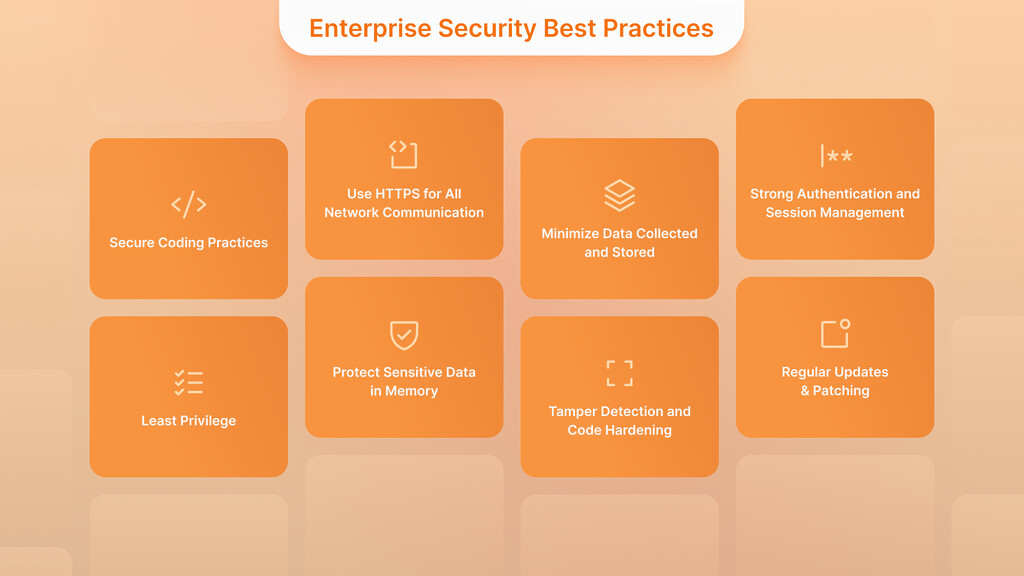
Enterprise apps should follow defense-in-depth – multiple layers of security to protect data and functionality. Here are some general best practices that apply broadly:
Secure Coding Practices
The development process should include writing code that prevents typical vulnerabilities found in OWASP’s Mobile Top 10 list. All security vulnerabilities must be prevented through complete input validation (keeping all user and API data suspicious), output sanitization when displaying special characters (to stop injection attacks), and avoiding unsafe libraries. Security audits that combine static analysis tools with manual review help developers locate issues before they become major problems during code reviews.
Use HTTPS for All Network Communication
All data exchanged between the app’s front-end and back-end must be secured with TLS (HTTPS). Encryption via TLS ensures that sensitive information remains safe from unauthorized interception and man-in-the-middle attacks on communication channels. The HTTP libraries for Flutter automatically support HTTPS endpoints, but back-end servers must have valid SSL certificates. Certificate pinning for sensitive applications should be implemented as a security measure that hardcodes specific server certificates or CAs to minimize risks associated with compromised certificates. Users benefit from certificate pinning as a protection against man-in-the-middle attacks, although they may face challenges when needing to update the app after certificate changes.
Minimize Data Collected and Stored
The app should gather data only for essential functionality according to data minimization principles. Reducing the amount of data handled leads to decreased risks from potential system failures. The analytics feature should not request access to exact locations or contacts since it doesn’t require such permissions to function properly. Your system should refrain from delivering large amounts of unnecessary data to the application during backend operations.
Strong Authentication and Session Management
The implementation of well-tested authentication structures, along with established methods, is detailed in the following section. Secure storage of authentication tokens and session identifiers must be ensured, as storing these elements in plaintext on devices is never acceptable; their transmission must also be secure. Session durations should be kept short, with periodic refreshes to minimize the timeframe during which stolen tokens can be misused. Multi-factor authentication is essential when dealing with highly sensitive data through enterprise apps, which now support both push 2FA challenges and biometric authentication as secondary verification.
Least Privilege
The app must request authorization permissions that directly support its core functions and nothing more. Users should enable device permissions selectively for camera, location, and storage services only when needed on both Android and iOS platforms. Security, along with user trust and compliance, drives this requirement, as limited access reduces potential damage if the app is compromised. The mobile application code should maintain role-based permissions because regular users must not access administrator data through the user interface or program functions.
Protect Sensitive Data in Memory
Be cautious about logging. During application development, teams must avoid storing sensitive information in the logging system. The production stage requires the complete removal of verbose logs and strict enforcement that prevents personal data and secrets from reaching log outputs because device or crash report extraction could result in log disclosure. Clearing sensitive data in memory becomes complex with high-level languages, but developers must maintain data duration within secure boundaries (passwords and authentication PINs should be zeroed out after authentication).
Tamper Detection and Code Hardening
Enterprise apps use detection systems to identify jailbroken or rooted devices, restricting functionality due to their decreased security. The release builds of Dart code support obfuscation features that make reverse engineering more difficult. Tools enable Flutter integration for debugging detection, allowing the app to alert users when someone tries to hook it. However, Flutter’s compiled nature already provides greater obscurity than standard JavaScript applications. Additional tamper-proofing elements should be evaluated for your app, as sensitive apps benefit from checksums and protective services against modifications.
Regular Updates & Patching
Security significantly relies on maintenance practices. Regularly monitor for vulnerabilities in the packages you use, including Flutter and Dart. Your application must receive security updates from both dependencies and Flutter itself whenever a vulnerability is identified. Your system should have the capacity to deliver urgent patches. While enterprise-managed devices allow MDM to enforce updates, public apps require users to perform updates independently; however, effective update mechanisms with user notification systems can enhance user behavior. The development team must keep track of relevant security information through newsletters, and CVE feeds that focus on mobile development areas.
Secure development hinges on proactive measures to thwart inevitable attacks. Threat modeling is essential for pinpointing attractive targets in your app and potential attack vectors, such as network sniffing and credential theft, enabling you to implement effective defenses.
The following section delves into encryption, authentication, and compliance, highlighting their importance in best practices.
Data Encryption and Secure Storage
Encryption is a cornerstone of mobile security. It ensures that even if data is intercepted or accessed by unauthorized parties, they cannot read it without the encryption keys. In an enterprise app, you likely have two types of data to encrypt: data in transit (network communication) and data at rest (stored on the device or server).
Encryption in Transit
As mentioned, always use HTTPS (TLS) for communication. TLS encrypts data between the client and server, and modern versions (1.2+ or 1.3) are recommended. This protects against eavesdropping on Wi-Fi or cellular networks. The app must verify the server’s certificate chain and use certificate pinning if appropriate. Avoid using outdated protocols such as HTTP or SSLv3. Flutter’s default network calls will adhere to system TLS, making this process straightforward. Additionally, avoid custom SSL handling that may disable certificate checks (this is sometimes done for development environments – ensure it’s not present in production).
Encryption at Rest (on Device)
If your app stores sensitive information locally, it should be encrypted. For example, if you cache user data or store an offline client information database, that file should be encrypted. On iOS, the hardware and OS provide strong encryption by default for app sandbox data when the device is locked (File Protection API). On Android, modern devices offer file-based encryption as well, but relying on device-level encryption isn’t always enough. If someone gets access to a rooted device or an unlocked phone, app data could be accessible. So, the app can add another layer:
- Use SQLCipher for databases (a Flutter plugin for SQLCipher) to encrypt the SQLite DB with a key.
- Use flutter_secure_storage for small data like tokens. This uses the Keychain/Keystore, which means the OS stores the data encrypted and tied to device security hardware. It’s suitable for OAuth tokens, keys, or any credentials.
- If you store files, consider encrypting them using a library or the platform channel’s native encryption APIs. Alternatively, don’t store highly sensitive files on a device unless necessary.
- Ensure that encryption keys are not hardcoded in the app (never embed an encryption key or password in your code—if someone decompiles the app, they’ll get it). Instead, derive keys from user credentials or fetch them securely from a server if needed.
Redefine Your Business with Custom Software Development
Tailored Software Solutions Designed for Your Growth
Explore Custom SoftwareWhen implementing encryption, it is important to use strong, industry-standard algorithms. For symmetric encryption, use AES-256 to secure your data. If asymmetric encryption is needed, RSA or elliptic curve algorithms are recommended. For hashing, consider using a secure hashing algorithm like SHA-256. Fortunately, many libraries are available to help with this process. For example, the encrypt package in Flutter can handle AES encryption of data. On iOS and Android, the Keychain and Keystore utilize AES and RSA with secure hardware support. It’s best to avoid creating your own cryptographic algorithms.
- Key Management: Encryption is only as effective as its key management. Utilize the platform’s secure storage for keys whenever possible to ensure that they are stored in a hardware-backed secure enclave. If you need to generate an encryption key for, say, an SQLite database, one approach is to derive it from user credentials (like a hash of the username and PIN) so that it’s not stored directly on the device, or to store it in secure storage that is itself hardware-protected. For server communications, your server will handle keys for TLS (that’s managed on the server side to ensure proper maintenance).
- End-to-End Encryption: In some cases, especially messaging apps or highly confidential data, you might implement end-to-end encryption (E2EE), where data is encrypted on one client and only decrypted on the intended recipient client, not even in the server’s memory. This is complex and usually beyond normal enterprise apps (which typically trust the server). But if relevant (like enterprise chat or file exchange where even the cloud provider shouldn’t see data), frameworks or libraries would be needed for this.
- No Sensitive Data in Logs/Notifications: Ensure that if you schedule local notifications or display information on the lock screen, it doesn’t leak private data. For example, by default, iOS can hide notification content on the lock screen until unlocked – use that for sensitive content or avoid showing it in notifications altogether (e.g., “You have a new message” instead of the actual message text, if privacy is necessary). Additionally, refrain from logging sensitive fields to the console, as they may be accessible from device logs in some cases.
- Secure Wipe: If your app handles data that might be deleted upon user action (like sign-out), ensure it’s properly removed. Delete files, clear caches, and remove any stored credentials from secure storage on logout. Users often assume logging out clears their data on that device.
In practice, Flutter developers will use plugins to achieve encryption. For example:
- Storing tokens: use flutter_secure_storage (which uses Keychain/Keystore and AES).
- Storing a large blob or file: You might use crypto or pointy castle packages to perform AES encryption on the blob with a key and store that key in secure storage.
- For a persistent database, use the sqflite_sqlcipher plugin to create an encrypted SQLite DB. Provide the passphrase from secure storage or user input.
Finally, remember to also secure the backend side—ensure the servers or cloud databases storing enterprise data are encrypted (databases encrypted at rest, etc.) and protected. However, as far as the mobile app is concerned, these measures above go a long way in protecting data on the client side.
